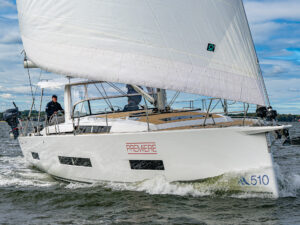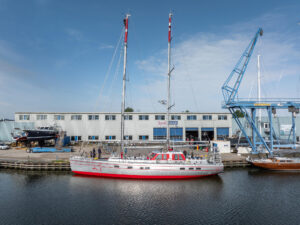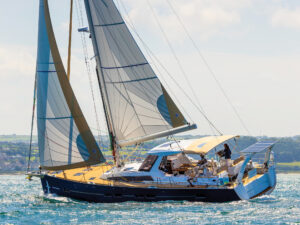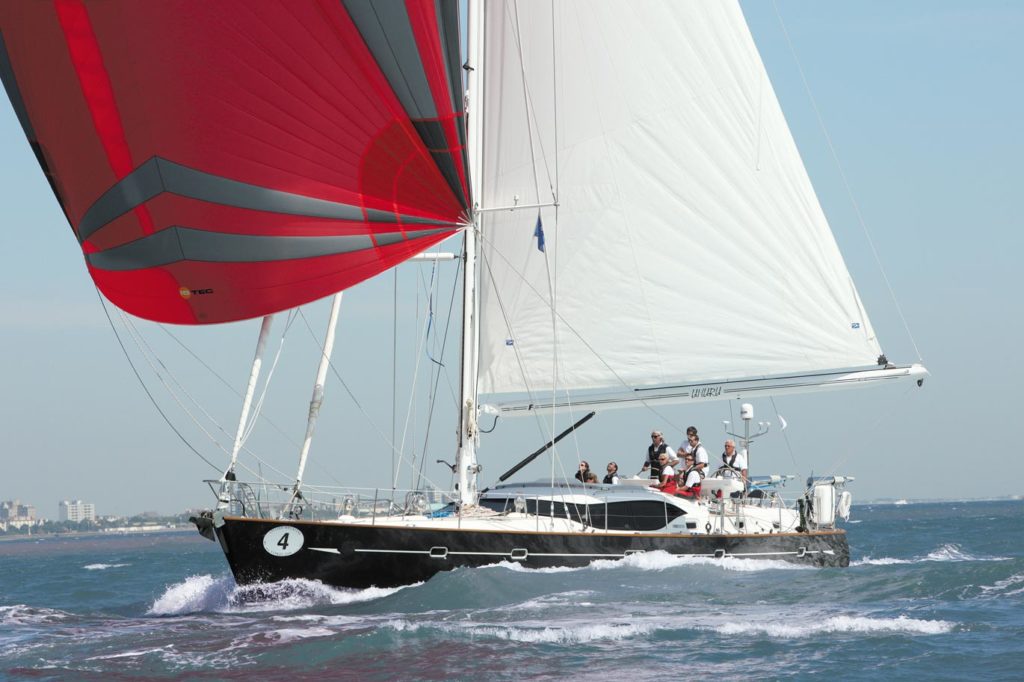
“Push the #@*>ing button,” yelled Bob DeHaven to his stepson, Dagan, as the jib flapped after the final tack for the finish line. Dagan, on the boat for the first time and a novice sailor, looked at the 12 buttons around the cockpit and wisely hesitated long enough for Bob’s wife, Mallika, to place her finger on the right one so the Lewmar 66 electric winch could grind in the luffing genoa.
We were racing their beautiful Oyster 62 Mistress Mallika in the Oyster Yachts Rendezvous, and had nailed the start in Newport, Rhode Island, and extended our lead on the other nine boats for the last few hours as we beat into Buzzards Bay off Massachussets with a sunny easterly breeze of 15 to 18 knots.
When you look at these high-end, British-built cruising boats, “Let’s go racing,” is not the first thought that goes through your head. But a glance at their tall rigs hints that the boats have the power, at least, to get up and go. And with lines on the newer boats drawn by Rob Humphreys, you can be pretty sure they have the hull shape to take advantage of their sail plan.
Now, these boats aren’t Transpac 52s, but on the 74,000-pound Oyster 62 we bashed along to weather, into a sharp chop, at a solid 7.5 to 8 knots, at about 40 degrees off the apparent wind. The hydraulic steering provided plenty of feedback for the helmsmen and made the boat fun to drive. Those who weren’t steering braced themselves in the cockpit with a bunch of truly comfortable corners.
Bob had a way of tacking Mistress Mallika that made a ton of sense to me: Before the tack, Mallika pushed the buttons to unfurl the staysail and sheet it in hard. Leaving it sheeted, he tacked the boat and the genoa slid over the staysail and down to the new leeward side without getting hung up on the inner forestay, which would have happened had the staysail not been set. After the genoa was sheeted home, we furled the staysail again, an easy job with the Reckman hydraulic furler.
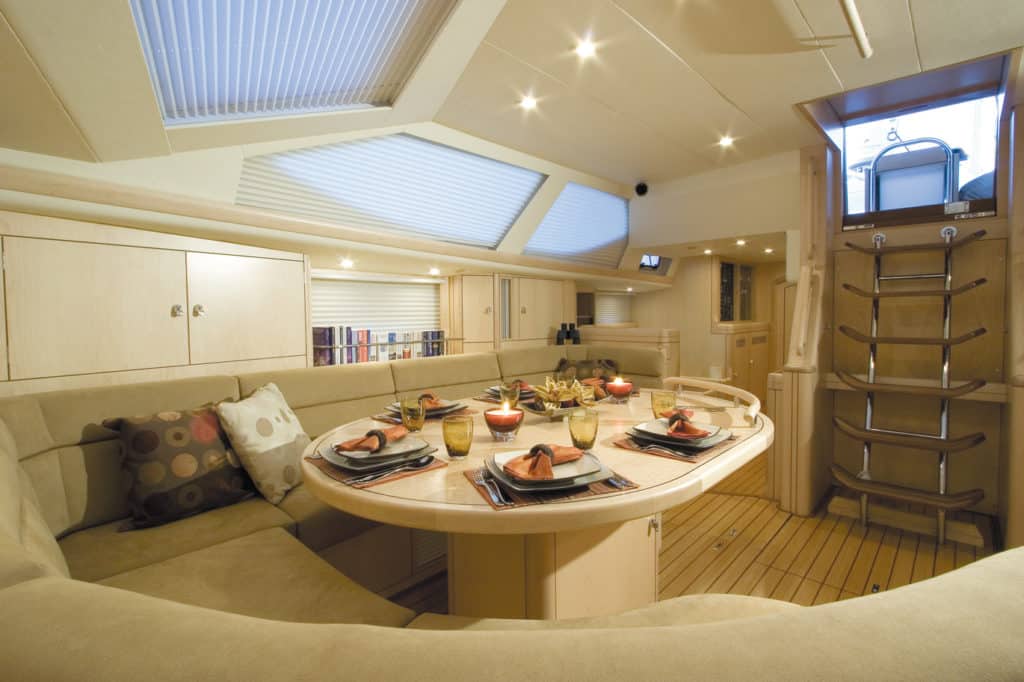
At the cocktail party on the front lawn of the New Bedford YC later that afternoon, we found that our 12-minute lead at the finish line was only good enough to get us third place on corrected time to Andre Lynch on his Oyster 49 Posterity and to Lon and Janie Sherman on their 485 Joppa. That was fine with us; the winners had sailed well and we had a great time. In fact, Dagan had such a great time he’s trying to figure out what kind of boat he can get for the lake near his home in Colorado, and where he can take sailing lessons so next time he sails with his stepfather, he’ll know which “#@*>ing button” to push.
Author’s Note:
As a delivery skipper, I sailed an Oyster 55 from Newport, Rhode Island, to St. Martin one November with her owner. I found the boat to be a comfortable and superb performer offshore in conditions that ranged from near gale to pretty light. When a load of bad fuel rendered the engine useless, we were able to keep the boat moving in the light stuff before reaching the trades, and I had enough confidence in the boat’s handling characteristics to sail up to the dock at Bobby’s Marina at the end of the passage, thereby avoiding the indignity of a tow. Recently, the owner of that boat upgraded to an Oyster 66.

